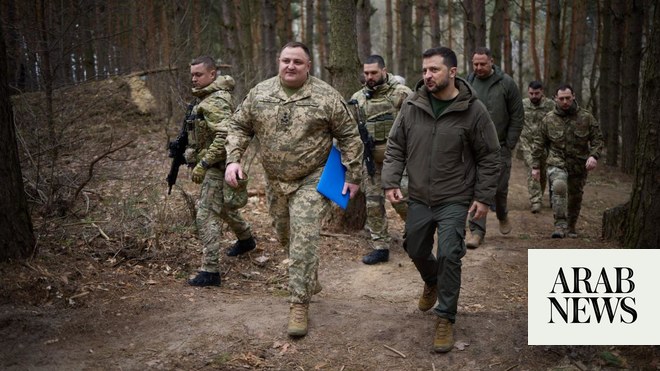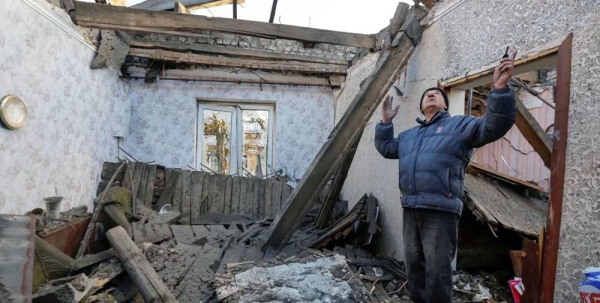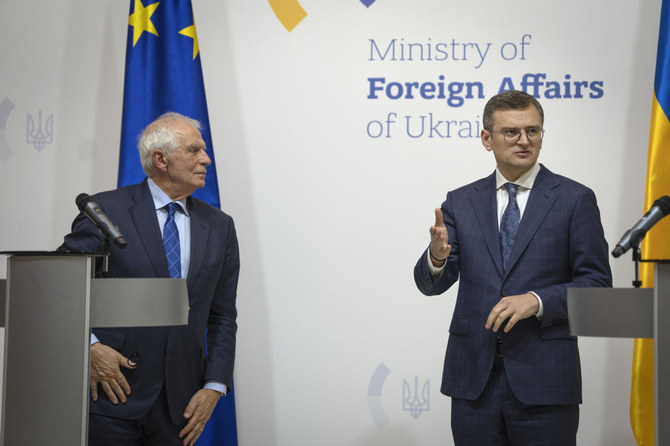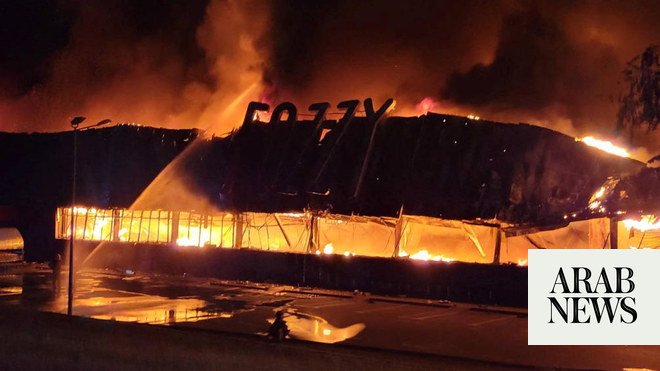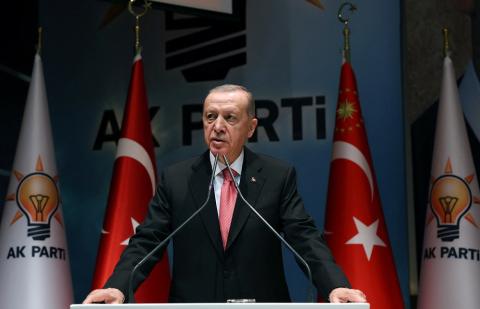
As Russia moved troops and vehicles to its border with Ukraine last month, videos posted on social media and Russian television showed often crude canopies over the turrets of some tanks -- offering rudimentary protection against Turkish-built drones and U.S.-supplied missiles in the event of war.
Moscow"s military posturing has already brought results, at least in diplomatic terms. After a similar mass mobilisation by Russian forces earlier this year, Russian President Vladimir Putin and U.S. President Joe Biden held a summit in Geneva. With Western fears growing that the latest troop buildup could lead to a Russian invasion, the two leaders held a two-hour video call on Tuesday.
Russian and U.S. briefings of the video discussions have made clear that what is at stake is not only a potential military confrontation. While U.S. officials have previously agreed that "all options" were on the table if Russia invaded Ukraine, Biden said on Wednesday that the deployment of U.S. troops was not being considered – and that Ukraine was not covered by the same mutual defence obligations as allies such as the Baltic states and Poland that are in NATO.
Instead, the United States is relying on financial and diplomatic leverage: the threat of sanctions, plus a block on the Nordstream 2 pipeline from Russia to Germany which Moscow hopes will deepen European reliance on Russian natural gas.
Both Moscow and Washington are now signalling they expect tensions to ease – but whether Russian troops will return home or leave equipment near the border ready for any future confrontation remains unclear.
Pulling back the present military threat allows Russia to avoid further immediate Western sanctions, and paves the way for the new German government to finally certify Nordstream 2, potentially lowing for gas to start flowing through it to Europe in the New Year. But Moscow remains concerned about Ukraine’s own resurgent military. If it is going to try to grab Ukrainian territory, it may decide it must do so soon.
In fighting last year over the mountainous Nagorno-Karabakh region in the South Caucasus, a conflict which threatened to suck in regional powers Turkey and Russia, Azerbaijan used Turkish drones effectively to destroy tanks deployed by ethnic Armenian forces. As well as drones from Turkey, the Ukrainian military now has access to U.S.-made Javelin anti-tank missiles which can strike vehicles from above to overcome their armour.
The United States and its allies have been training Ukrainian troops, and some pundits in Moscow say Kyiv might one day be tempted to try to take back territory seized by Russian forces in 2014, when Russia annexed the Crimea peninsula and backed separatists in a conflict in eastern Ukraine that remains unresolved.
SIDELINING UKRAINE
How a concerted attempt at a land grab by Russian forces might unfold is hard to predict.
All options involve risk. Whatever happens over Ukraine will affect Putin and his prestige in Russia. In July, the Russian leader published a long article on Ukraine, portraying the former Soviet republic as lacking identity. Moscow has offered citizenship to residents of the separatist areas in eastern Ukraine as pro-Kremlin commentators discussed whether they should be annexed. A successful war might strengthen Putin"s popularity in Russia, even if it came at the cost of international sanctions, but military failure could undermine his authority.
Moscow may already be achieving some goals. President Volodymyr Zelenskiy and other Ukrainian leaders have largely been sidelined in these discussions. Before his call with Putin, Biden spoke to multiple European leaders but not to Zelenskiy, who had to make do with U.S. Secretary of State Antony Blinken.
Moscow has long made clear its frustration with the so-called Normandy process for negotiations with Ukraine, attended by leaders from Kyiv, Paris and Berlin. One message after Tuesday’s call was that it would rather resolve such matters directly with Washington.
While Putin is unlikely to get his wish for an explicit U.S. pledge to end NATO enlargement, preventing the former Soviet republics of Ukraine, Georgia and Moldova becoming members, there seems little or no prospect of them joining in the foreseeable future anyway. U.S. and wider Western military support for Kyiv is likely to continue, however. An additional $300 million has been included in the U.S. Defense Authorisation Bill which was released on Tuesday.
That"s a sign of what is increasingly becoming an important focus for Washington: deterring Russia from attacking Ukraine and deterring China from attacking Taiwan, with the United States strategically ambiguous over what action it would take militarily in either case. That appears to work in the case of Russia, where pro-Kremlin analysts have long talked of the prospects for a return to a "big-three" world dominated by the United States, China and Russia.
TOP-TABLE GAMBIT
The threat of Russian military power is important to Moscow"s attempts to have or keep a seat at that table. Russia’s economy is much smaller than that of the United States and China, and Russia"s ability to inflict military force on a neighbour, its nuclear arms and growing stock of high-tech cyber and hypersonic missile capabilities may become increasingly important as growing green energy options reduce other countries" dependence on its gas and oil.
Financially and diplomatically, the United States can cause damage to the Russian economy and Russian elites. Dropped from the U.S. Defense Authorisation Bill were several more stringent steps, including sanctions that would bar U.S. individuals and firms from holding Russian debt as well as increased sanctions on Nordstream 2, but there is potential for them to be reintroduced.
Ultimately, the country that will decide whether Russian gas can start flowing through Nordstream 2 is Germany, and its new government led by Social Democrat Olaf Schultz.
France and Germany have long supported trade links with Russia and backed the completion of the pipeline. Both will also need to make their own choices on military aid to Ukraine. A possible path forward if Russia does not invade Ukraine would be for Berlin to complete certification on the pipeline and allow it to start operating, while also delivering weaponry to Kiev.
If there is a war, Putin can expect to face a more united Western front against Russia than previously. His decision on whether or not to risk this could come down to where he feels he has the most to win or lose.
*** Peter Apps is a writer on international affairs, globalisation, conflict and other issues. He is the founder and executive director of the Project for Study of the 21st Century; PS21, a non-national, non-partisan, non-ideological think tank. Paralysed by a war-zone car crash in 2006, he also blogs about his disability and other topics. He was previously a reporter for Reuters and continues to be paid by Thomson Reuters. Since 2016, he has been a member of the British Army Reserve and the UK Labour Party.
Editing by Timothy Heritage
Our Standards: The Thomson Reuters Trust Principles.






